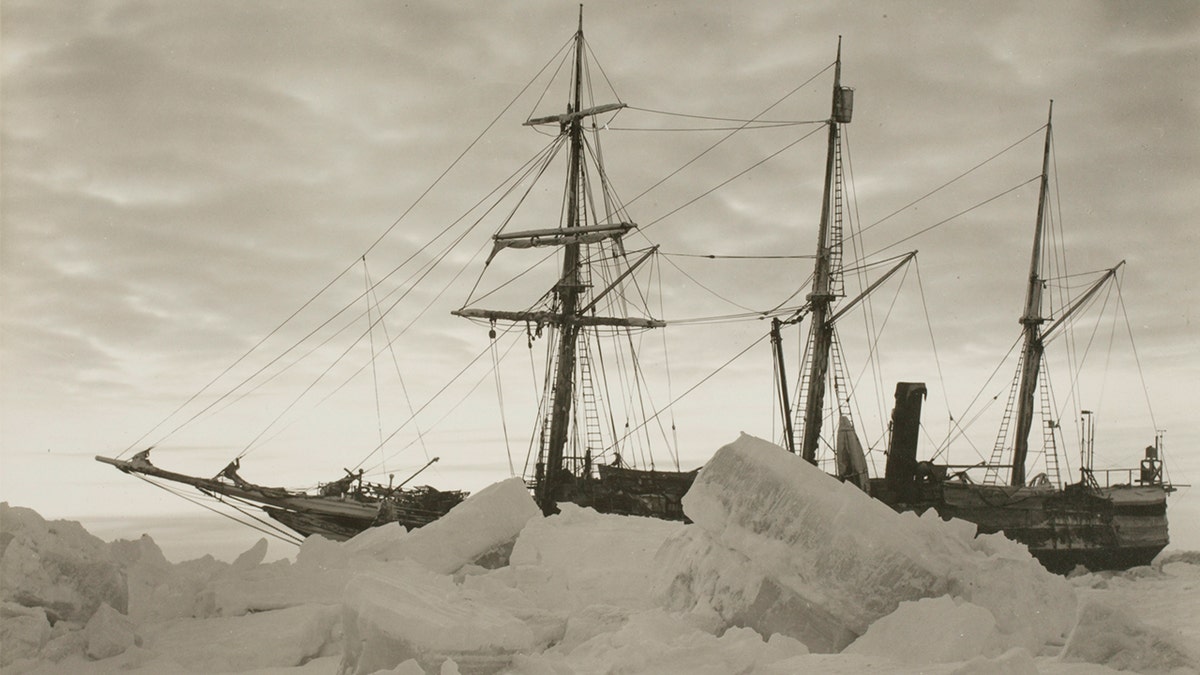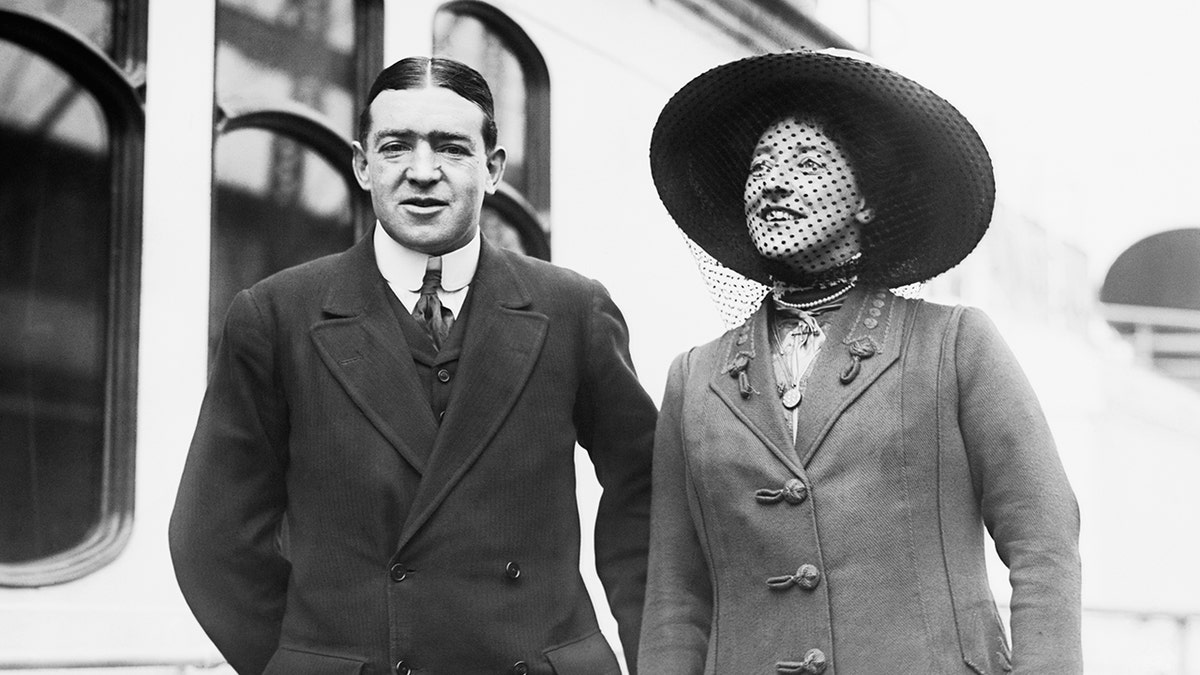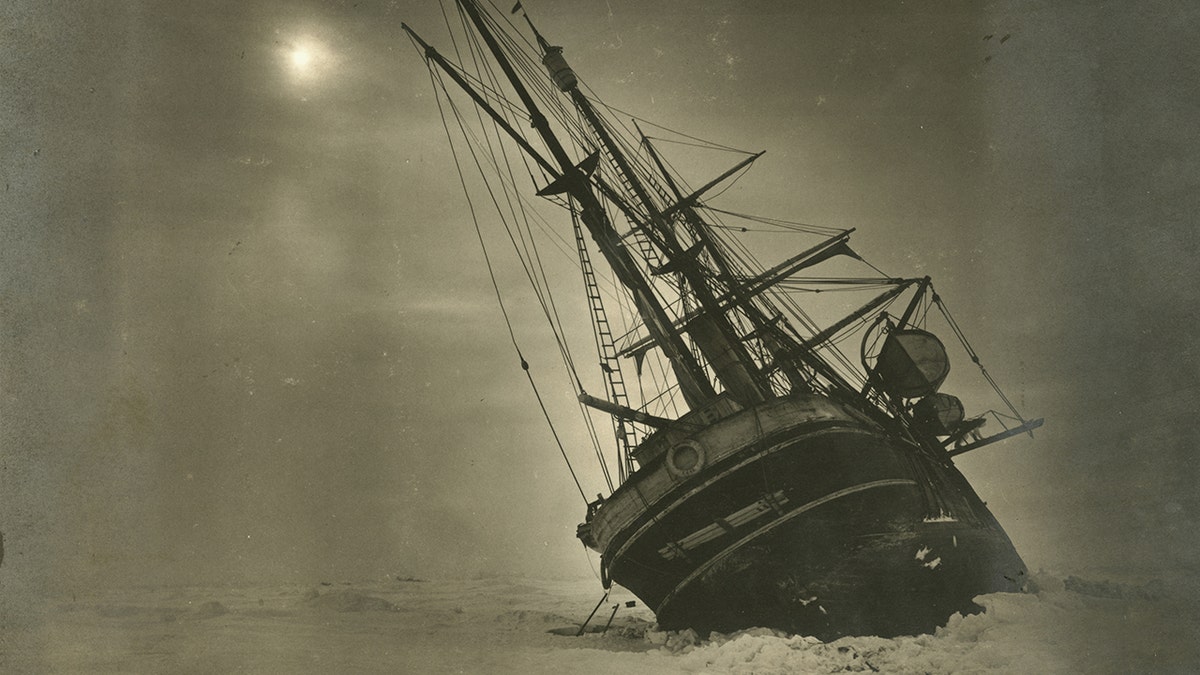NEWYou can now listen to Fox News articles!
A researcher believes he’s cracked the mystery behind the sinking of Sir Ernest Shackleton’s legendary ship Endurance.
Part of one of the most famous Antarctic expeditions in history, Endurance set sail from England to the White Continent in August 1914. On Jan. 18, 1915, the ship became frozen in place about 76 miles from the coast of Antarctica.
Locked in sea ice for the next ten months, Endurance drifted slowly across the Weddell Sea until it sank on Nov. 21, 1915.
The ship is so famous because its sinking was disastrous, but not tragic – Shackleton guided all 27 crew members to safety and was able to slowly remove cargo, supplies and boats before the vessel sank.
DIVERS REVEAL IMAGES OF 321-YEAR-OLD SHIPWRECK IN REMARKABLE CONDITION OFF COAST
In an Oct. 6 article in the journal Polar Record, Aalto University professor Jukka Tuhkuri argues that the culprit of the sinking lay not in the pressure of the ice, but in the ship’s structural weaknesses.
At the time, Endurance was regarded as nearly indestructible, but Tuhkuri’s research suggests its reputation was unwarranted.
The Finnish researcher argues the ship’s loss stemmed from deeper engineering flaws, not just damage to its rudder. The vessel was built for Arctic, but not quite Antarctic, conditions.
EERIE IMAGES SHOW CENTURY-OLD WRECK OF TITANIC’S SISTER SHIP AS DIVERS RECOVER ARTIFACTS FOR FIRST TIME
“While the final reason was tearing off the keel, Endurance sank because the vessel was simply crushed in compression by ice,” wrote Tuhkuri.

“This is not surprising, Endurance was not designed for compressive conditions in the Antarctic pack ice, but for easier conditions at the ice edge in the Arctic.”
The polar engineering expert consulted letters from Shackleton and expedition diaries during his research, as well as conducting a structural analysis of the ship itself.
Its engine room lacked cross-beams to distribute compressive forces, and the hull had limited diagonal bracing, which left it vulnerable to side-to-side crushing by ice.

“The weakest part of its hull was the engine room area, which was not only larger than in other early Antarctic ships but also lacked beams to give strength against compression by ice,” the article details.
MORE FROM FOX NEWS LIFESTYLE
“Comparison with other wooden polar ships is not favourable for Endurance: ships designed for compressive pack ice were stronger. It is also evident from archive research that Shackleton was well aware of the weaknesses of Endurance even before his expedition set sail for Antarctica.”
The research comes over three years after the remains of Endurance were found roughly 9,840 feet below the surface of the Weddell Sea in 2022.

Mensun Bound, director of exploration for the Endurance22 expedition, called the vessel “by far the finest wooden shipwreck I have ever seen.”
“It is upright, well proud of the seabed, intact, and in a brilliant state of preservation,” Bound reported. “You can even see ‘Endurance’ arced across the stern, directly below the taffrail.”
Julia Musto contributed reporting.
Read the full article here







Leave a Reply